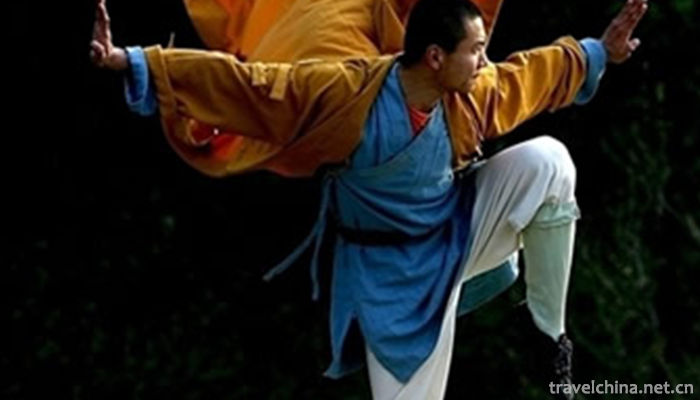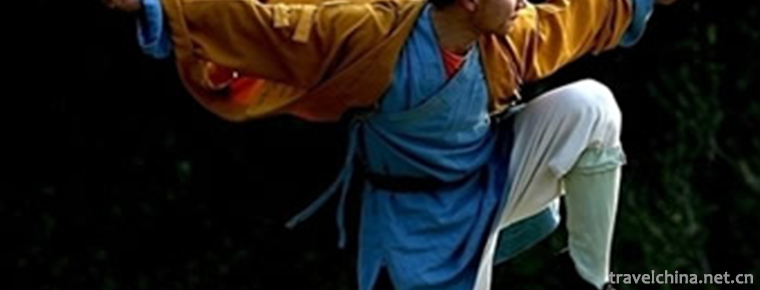Shaolin Kung Fu
Shaolin Kung Fu
Shaolin Kungfu, also known as Shaolin Wushu, is one of the famous schools of Wushu in China. It has a long history and profound influence. It is an important part of Chinese traditional Wushu. The most prominent feature of Shaolin Kungfu is the integration of Zen and Wushu, that is, the practice of Zen into Wushu, so it is also known as "Wushu Zen".
In 2006, it was included in the national intangible cultural heritage list.
Definition of Shaolin Kungfu
Shaolin Kungfu refers to the traditional cultural system formed in the specific Buddhist cultural environment of Songshan Shaolin Temple, which is based on the belief in Buddhist divine power, fully embodies the wisdom of Buddhist Zen, and takes the martial arts practiced by monks in Shaolin Temple as its main manifestation. This cultural system has a complete technical and theoretical system. It takes martial arts skills and routines as its manifestation and Buddhist beliefs and Zen wisdom as its cultural connotation. Shaolin Kung Fu respects Damo as its ancestor. Current academic circles believe that "Damo Chuangquan theory" is a kind of accessory. His practice of martial arts actually began with the monk Fu Zen of the Northern Qi Dynasty.
Main Contents of Shaolin Kungfu
Shaolin Kungfu is rich in content and diverse in routines. According to the records of Shaolin Temple, there are 708 sets of Shaolin Wushu routines, including 552 sets of boxing and equipment routines, and 156 sets of other attack routines, such as 72 stunts, grabbing, fighting, unloading bones, point points, Qigong and so on.
Among them, Shaolin Kungfu mainly includes Shaolin Diamond Boxing, Shaolin Wuhe Boxing, Shaolin Watchdog Boxing, Xinyi Ba, Dahong Boxing, Xiaohong Boxing, etc. The regional division includes Songshan Shaolin Boxing, South Shaolin Boxing and North Shaolin Boxing.
Shaolin instruments mainly include Shaolin knives, guns, swords, sticks, nine-knot whips, concealed weapons, rare weapons (tiger hooks, convenient shovels, Damo sticks, Niujiaoguan, etc.).
Shaolin skills mainly include Sanda and fighting, Shaolin Qigong, Shaolin Dazhao secret, Shaolin point method, Shaolin capture method, Shaolin 72 arts, Shaolin longevity method, Shaolin Temple traumatology and so on.
These are just statistics of the scale of Shaolin Temple Wushu in Songshan. If we take the Southern Shaolin Wushu, the Northern Shaolin Wushu and the popular routines into account, the technical system of Shaolin Wushu will be more abundant.
In Shaolin Kungfu system, cudgel is the most famous. In the Ming Dynasty, Shaolin stick method was well known all over the world. Qi Jiguang, Zheng Ruozeng, Cheng Zongyou, Mao Yuanyi and Wu Xin all gave high appraisal. For example, Qi Jiguang said when discussing Wushu schools: "Shaolin Temple's stick and Qingtian's stick method are combined, Yang's gun method and Bazi's fist stick are well-known nowadays"; Zheng Ruo once recorded in Jiangnan Jinglue the Ming Dynasty's "thirty-one" and "the family of messengers" with the first mention of "Shaolin's stick method"; Cheng Zongyou considered Shaolin's stick method as "the Supreme Bodhi"; Mao Yuanyi wrote his military work Wubeizhi. 》 Zhong believes that "all arts are based on sticks, sticks are based on Shaolin"; Wu Xin at the turn of Ming and Qing Dynasties called Shaolin stick method "the stick family is out of business" .
Characteristics of Shaolin Kungfu
The characteristics of Shaolin Kungfu are that it pays attention to fighting skills and is based on actual combat. Therefore, its routine structure is short, compact, vigorous and swift, flexible in attack and defense, and unified in consciousness and action. There is a way to go in and a way to go out. Therefore, the theory of boxing is that "the body's indulgence, the step's deposit, the hand's entry and exit, or advance or retreat, or rise or fall, all should be concentrated in a consistent manner" .


-
1.Huangguoshu Waterfalls Scenic Area
Huangguoshu Scenic Spot is a key national scenic spot, located in southwest Guizhou Province, 128 kilometers away from Guiyang City, the capital of Guizhou Province
Time 2018-12-12 -
2.Baimaiquan Park
Baimaiquan Scenic Area, located at No. 2017 Huiquan Road, Zhangqiu District, Jinan City, Shandong Province, is located in the eastern part of Jinan City. Founded in 1986
Time 2019-01-02 -
3.Huangshan Yi Culture Tourist Area
Huangshan Yi Cultural Park is a national AAAA-level tourist attraction, located in the northwest of Linyi Economic and Technological Development Zone.
Time 2019-01-18 -
4.Danzhou tune
Danzhou tune is a traditional folk song which only spreads in Danzhou of Hainan Province and has a unique regional style. It is sung in Danzhou dialect with a lively rhythm
Time 2019-04-25 -
5.Making Skills of Filament Mosaic
Silk mosaic is one of the traditional handicraft techniques in China. Gold, silver and copper are drawn into silk, and various decorations such as jewelry and utensils are made by various techniques.
Time 2019-05-04 -
6.Sheng Guanyue in Jizhong
Jizhong Sheng wind music is popular in Jizhong Plain, that is, south of Beijing, west of Tianjin, north of Cangzhou and Dingzhou frontline nearly 30 counties and cities of traditional drum music varie
Time 2019-05-05 -
7.Scissors Forging Technology
Zhang Xiaoquan scissors forging technology, local traditional handicraft in Hangzhou, Zhejiang Province, one of the national intangible cultural heritage.
Time 2019-05-05 -
8.Jinling Classic Carving and Printing Techniques
Jinling classical engraving and printing technology, local traditional handicraft in Nanjing, Jiangsu Province, is one of the national intangible cultural heritage.
Time 2019-05-06 -
9.Brush making skills
Brush making skills, local folk traditional skills in Huangpu District of Shanghai and Jiangdu District of Yangzhou City of Jiangsu Province, one of the national intangible cultural heritage.
Time 2019-05-24 -
10.Ping Ju Opera
Opera commentary is a kind of opera which is spread in the north of China. It is one of the most popular operas among the people and ranks among the five major Chinese operas. Some people once thought
Time 2019-06-09 -
11.Cao Can
Cao Can(? - 190 BC) , Han nationality Peixian people In the Western Han Dynasty, the founding fathers and famous generals were the following. Xiao He Later, the second dynasties in the Han Dynasty wer
Time 2019-09-15 -
12.Honorary title of Mianyang
National system to promote comprehensive innovation reform pilot area
Time 2020-12-14